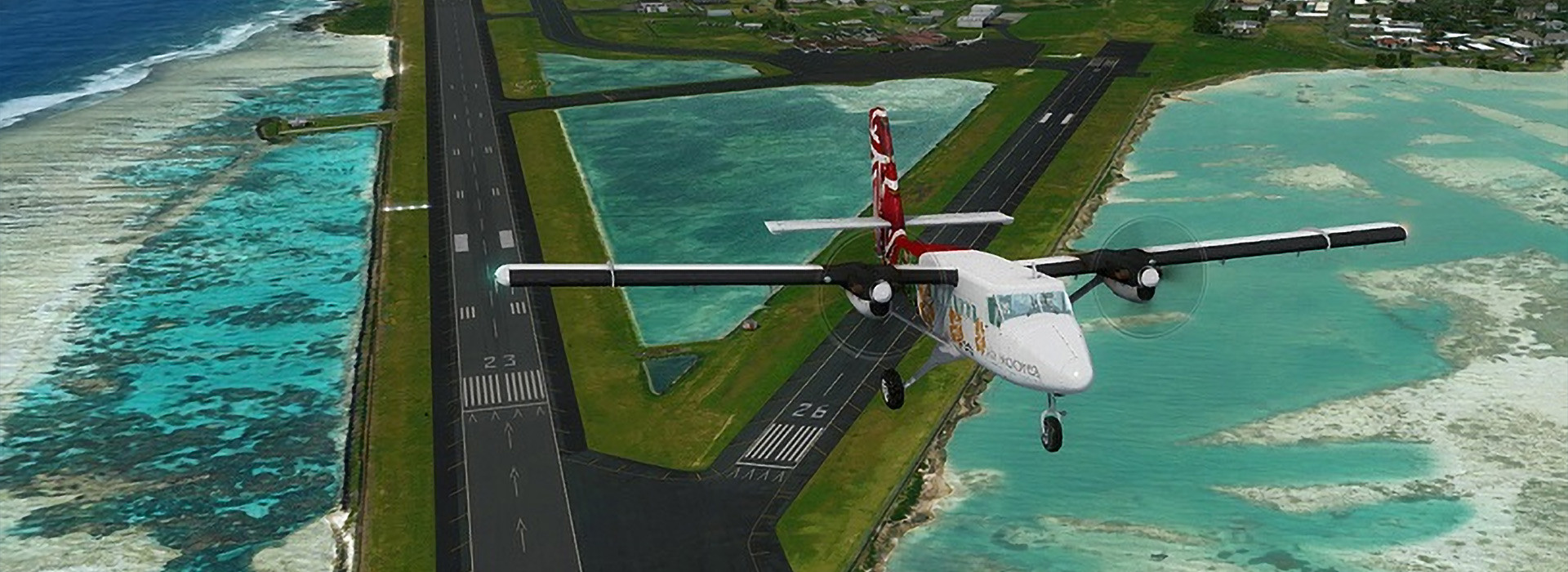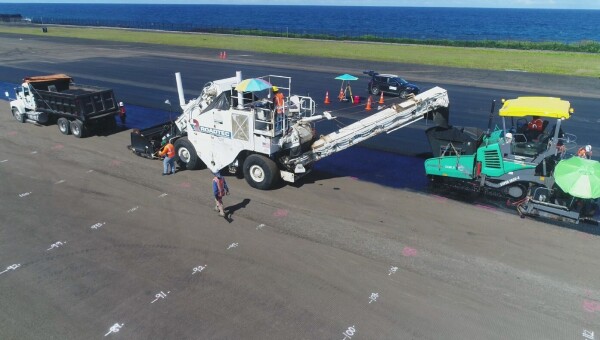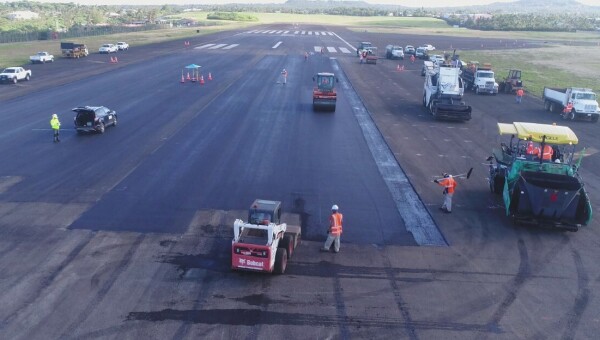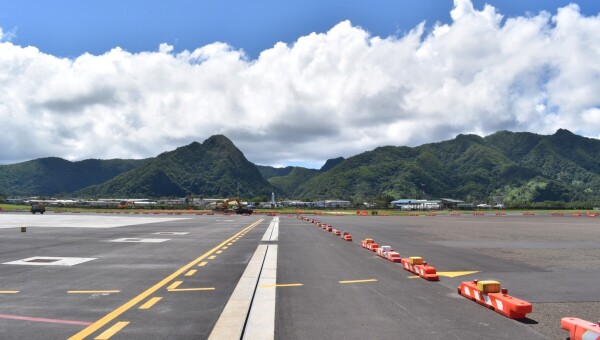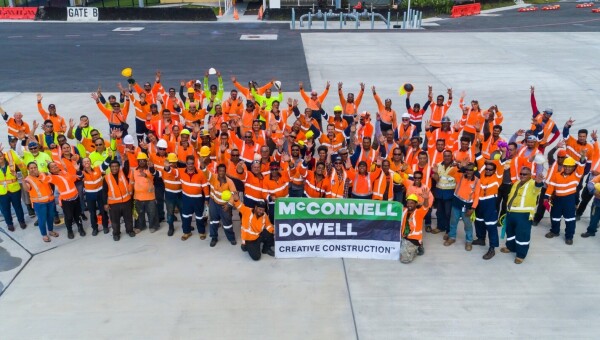|
Customer: American Samoa Government, Department of Port Administration (DPA) and Federal Aviation Authority (FAA) Location: Pago Pago, American Samoa Contract Type: Measure and value |
Fast Facts
|
We resurfaced the runway at Pago Pago Airport to improve its condition rating, and raise the shoulder edge by four inches to meet FAA requirements for international airports. Our work included a complete survey of the existing site; construction of Runway 5-23, the shoulder pavement, two taxiway and turning node pavements and paint-marking.
This was our eighth airport project in the Pacific Islands and followed our successful completion of the USD6.7 million rehabilitation and extension of Runway 8-26 in 2007 and the Taxiway Alpha Rehabilitation in 2011.
The challenge
The primary runway in Pago Pago, Runway 5-23 accommodates at least three flights week and any disruption to runway operations was simply not an option. Our team worked tirelessly to plan works around scheduled flight times – including accommodating an additional 63 flights over the six month construction period.
A challenging pavement design added another layer of complexity.
The solution
After experiencing some early issues with the quality of the runway surfacing works, we altered our construction methodology to lay the pavement lengthwise along the runway rather than horizontally across the runway as had been originally intended. This approach enabled us to meet strict FAA quality standards while accommodating planned and unplanned flights.
By focussing on the runway shoulders on busy weekdays and the middle lanes on weekends, when there were fewer flights, we were able to achieve production rates of more than double that estimated during the tender phase.
Through careful planning, we were able to complete Runway 5-23 without any major disturbances to Pago Pago Airport.
Key to Success
A collaborative relationship with airport stakeholders was key to completing the works with minimal disruption to airport operations. A flexible pavement construction methodology enabled us to balance flight schedules and programme demands.
By keepibg a close eye on quality metrics, we were able to continuously improve the quality of the compaction and ride quality as the project progressed.
Stakeholder management and a safety-first focus
Undertaken in a live airport environment, this project required vigilant planning and ongoing engagement with airport stakeholders to prevent any disruption to airport operations. Our team met weekly with airport staff to ensure they had a complete understanding of their needs. Through our understanding of airline requirements, we developed a trusted relationship with the airport and ground staff who allowed us the freedom to work in the areas we required provided temporary routes or parking areas was provided for passengers and customers.
This close engagement with airport operational staff was also key to achieving the project’s outstanding safety record of 0 TRIFR and 0LTIFR. The key to achieving this was building a strong safety culture. We ensured staff were always engaged in Toolbox and Prestarts by rotating the people who led them and developing fresh content.
Innovation – thinking outside the runway
Standard industry practice sees grooving machines accompanied by a vacuum truck to dispose of ‘grooving silt’. With only one grooving truck available in Pago Pago, our team developed an alternative solution using a concrete truck for the same function. Our workshop team fabricated a custom discharge pipe on the side of trucks, enabling them to discharge directly into the agitator. The modified trucks were trialled and approved by the subcontractor and client, improving productivity and reducing the time and cost associated with stand down time.
Local employment
We employed the services of a local electrical subcontractor Young Energy Solutions to complete cabling installation, earthing and associated connections. They brought extensive local knowledge and added to the project in areas outside of our on-island expertise.

